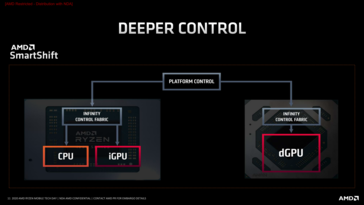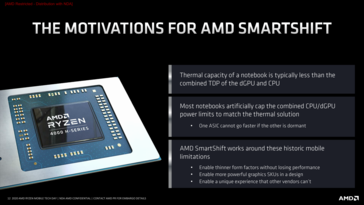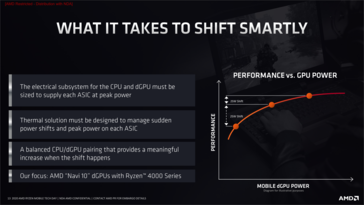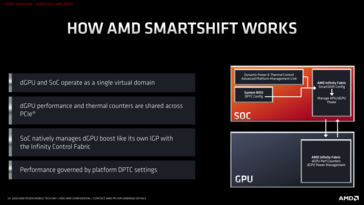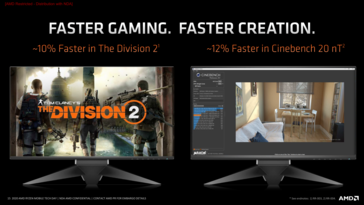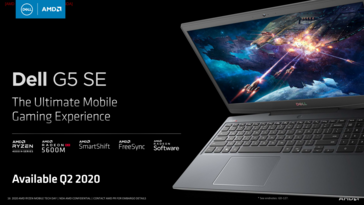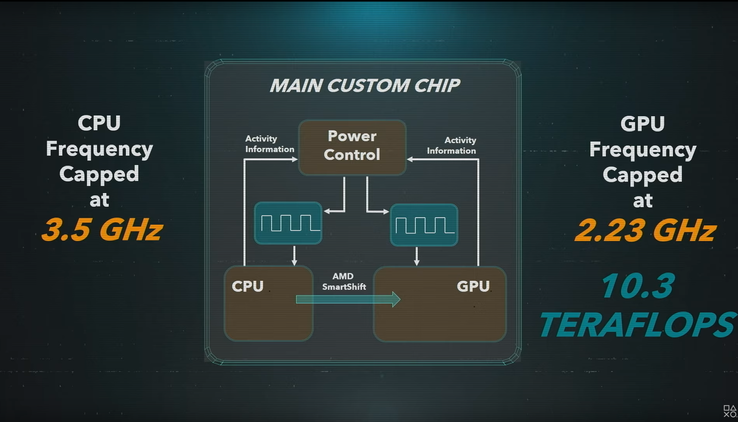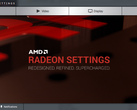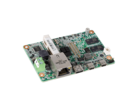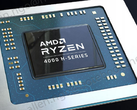(March 18, 2020 update: Sony has announced that the upcoming PS5 console will utilize AMD SmartShift between its Zen 2 CPU and RDNA 2 GPU. SmartShift increases CPU and GPU performance by varying the power budget of each depending on demand. If a game requires more GPU resources than CPU resources, for example, then the PS5 will be able to divert more power away from the CPU in order to improve GPU performance and vice versa. Thus, clock rates will be variable instead of fixed. It's ultimately a cost-saving technology designed to optimize performance-per-Watt and to squeeze as much power as possible from the CPU and GPU without running each at their respective maximum frequencies indefinitely.)
The 3rd gen mobile Ryzen series is looking to be AMD's best bet yet against Intel in the world of Ultrabooks and gaming laptops. The upcoming Ryzen 5 4600H, Ryzen 7 4800H, and Ryzen 9 4900H will compete in the high-end space against the Intel Core i7/i9 H-series whereas the last generation Ryzen 5 3550H and Ryzen 7 3750H were only comparable to the Intel Core i5.
AMD will also be introducing a new feature alongside its new generation of Ryzen H CPUs called SmartShift. As unveiled at CES 2020, SmartShift allows the CPU and GPU to "consume power from a shared power budget" dynamically depending on the processing load. In contrast, the CPU and GPU in a typical gaming laptop would have fixed and pre-defined power budgets that are independent of one another. AMD's approach promises up to 10 percent better performance in some games and 12 percent faster CPU performance without any additional hardware required.
The main problem with SmartShift is that it requires a laptop to have both an AMD Ryzen CPU and a discrete AMD GPU. Go to your local electronics store or favorite online retailer and you'll find that the number of AMD-only gaming laptops can be counted in the single digits. Only one upcoming gaming laptop we know of - the Dell G5 15 Special Edition - will actually feature SmartShift.
When asked why the technology cannot be applied to more prevalent Intel-AMD or AMD-Nvidia laptops like the upcoming Asus Zephyrus G14, AMD told us that its dynamic power shifting approach relies on the synergy between two different Infinity Fabric controllers found only on certain AMD CPUs and GPUs. Unless if OEMs can start pumping out AMD-only gaming laptops by the dozen, the SmartShift feature will unfortunately have to exclude almost 99 percent of all gaming laptops in the current market.





